Château Margaux – Up Close
Ned Goodwin MW delves into the compelling and lionised Château Margaux.
France boasts a plethora of neo-classical châteaux, each summoning fantasy, mythology and aspiration in equal measure, with evocations of distant exotica carved into their turrets or the toil of man in the vineyard, manifest as spiritual allegories encrypted in their friezes, all hallowed turf for the fine wine collector in Bordeaux. Yet none are as majestic as Château Margaux, its long driveway peeling away a vista of tall Doric columns framing a portico as if a plinth, with three rows of windows behind. Château Margaux’s aesthetic is one of majesty, austerity and gravitas, its discretion juxtaposed against the flamboyance of many of its neighbours. Yet paradoxically, the style of its wine is a very different story. As leading commentator Jane Anson notes, ‘It’s the aromatics that makes Margaux soar so clearly above its peers.’ What makes it so special?
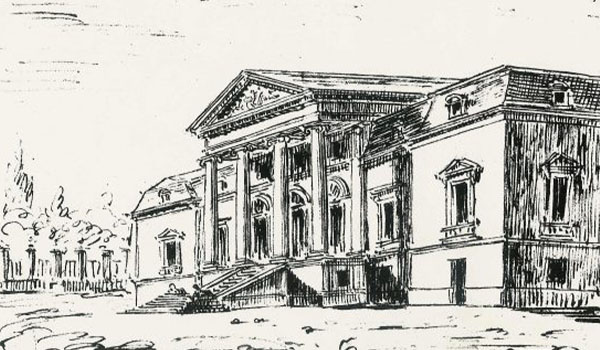
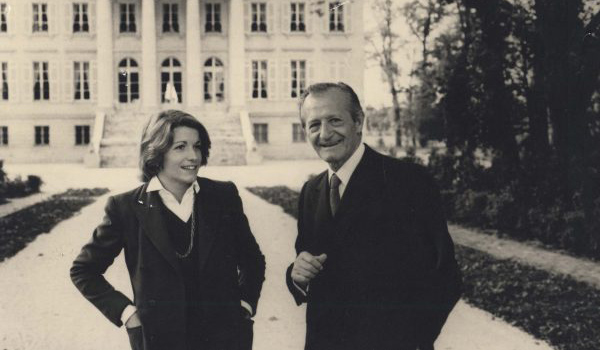
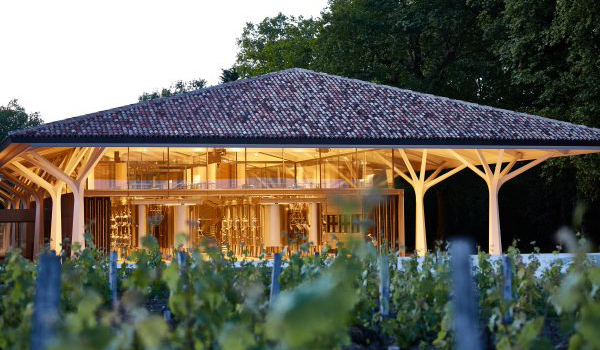
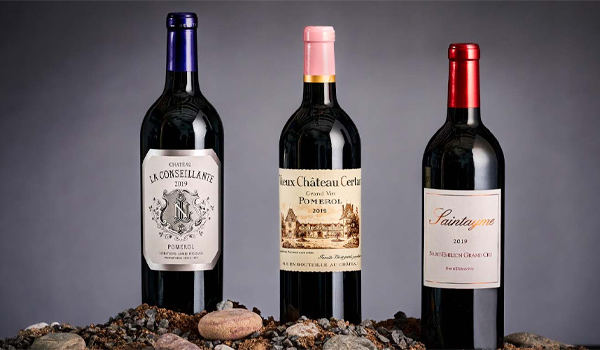 Bordeaux 2019 Buying Guide
Bordeaux 2019 Buying Guide
 Bordeaux 2019 In Bottle
Bordeaux 2019 In Bottle
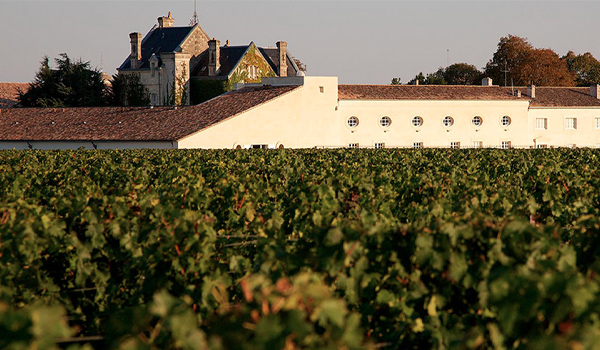 The Miracle of Mouton
The Miracle of Mouton
Château Margaux lies in the eponymous commune in the department of the Gironde, in the vaster Médoc region of Bordeaux, all within a stone’s throw of the mineral-rich alluvials that have been washed to and fro, before being drained from the river lapping at its vineyards. It is these geologies – and the culture of managing them – that serves a tradition of crafting some of the finest wines known to man.
Château Margaux was designed as a private residence in the First Empire, or neo-Palladian style, for Marquis de Colonilla by leading Bordeaux architect Louis Combes, in 1810. As with so many properties belonging to the aristocracy or royalty, it had been confiscated during the Revolution. It was completed in 1812. Combes skilfully placed the prerequisite workplaces for crafting wine as separate buildings at the peripheral of the Châteaux, making for both a pragmatic design, but also an holistically pleasing aesthetic. Since my last visit, the Nouveau Chai was built in 2015, extending from the eastern wing of the complex as a new facility for the production of both red and white wines while also housing a research development facility and an underground wine library. It was designed by Lord Norman Foster, arguably the greatest architect of our age, responsible for the Reichstag in Berlin among other seminal buildings. The new chai’s low arching form is tucked into the landscape behind the Château, conferring a similar discretion while evincing no less an authoritative message: Château Margaux belongs to the past, as much as it does to the here and now.

An early illustration of Château Margaux
Yet the history of Château Margaux extends back to the 12th century when it was known as ‘la Mothe de Margaux’. It was a property reserved for royalty. Vineyards were not yet planted. It was not until 1572-1582 when Pierre Lestonnac took ownership, that the property was converted from one of grain to grapes. Thereafter, under the aegis of the d’Auledes family in the 1600’s, the vineyards were fully developed. By the end of the 17th century, Château Margaux had grown to 265 hectares, 80 of which were dedicated to vines and the rest, to parkland and greenery. Today, the land devoted to vineyards remains pretty much the same, affirming the Château’s reputation for mediation and patience when it comes to growth, while alluding, too, to a somewhat trepidatious approach to change and the technology so readily embraced by its neighbours.
Ironically, however, it was at Château Margaux that modern winemaking began in many ways. A winemaker by the name of Berlon was the first to vinify white and red grapes separately in order to craft two different wines. Prior, grapes of each colour were planted, blended and made together. It was Berlon, too, that acquired an appreciation for the influence of certain geologies on texture and flavour profiles. Back then, however, he chose to harvest later in the afternoon to achieve maximum ripeness and flavour in the grapes, a very different approach to today.
By the 18th century, Margaux was considered one of the world’s great wines, with Thomas Jefferson and Prime Minister Sir Robert Walpole of Britain among its ardent fans. Of course, in 1855, the leading Bordeaux producers were classified according to reputation, price and taste, a ranking that remains steadfast today. Margaux was one of four châteaux named at the top tier, or first growth, along with Lafite, Latour and Haut-Brion, later to be joined by Mouton Rothschild in 1973.
‘...To speak of great vintages is to write a tome. Yet in recent memory 2009, 2010, 2015, 2016, 2018, 2019 and 2020 have all achieved vociferous praise...’
By the late 1800’s, Château Margaux had fallen into hard times. Phylloxera had ravaged much of western Europe’s vineyards including those of the Médoc. The Château’s vineyards need replanting and it took almost 20 years for the new vines to come on steam. Recessionary pressures and lesser quality fruit served as catalyst for production of the first Pavillon Rouge du Château Margaux in 1906, the newly named second wine of the property. Admittedly, there had been a second wine produced from time to time since the 1700’s, although it was merely called ‘2ème vin’. Estate bottling, too, another means to verify authenticity while increasing quality, began in 1924. It was stalled during the Great Recession and Second World War, recommencing in 1949.
Yet the modern age of Château Margaux really began in 1977 when the Ginestet family, under pressure due to precipitous pricing for Bordeaux during the oil crisis of the 1970’s, sold to current owners, the Mentzelopoulos family. The property was in shambles following financial hardship and a slew of average vintages. Remarkably, the property had been on the market for more than two-years before being sold for a mere USD 16 million! Andre Mentzelopoulos died in December 1980 and his daughter, Corinne Mentzelopoulos, took the reins.
Corrine was young, but she was no naif. She acknowledged her lack of experience and acumen when it came to the wine world and soon sought help, consolidating renowned Bordeaux oenologist Emile Peynaud and estate director, Philippe Barré, as the first additions to a new wine team. Subsequently, the cellar was extended in 1982 and vineyard density was increased, serving to encourage competition among the vines’ root systems for water and subsequent nutrient uptake, while maximising the quality of the fruit as a result. Yet the pinion of the modern era was the employment of legendary technical director and cellar master, Paul Pontallier, soon after. Pontallier was an agricultural engineer with a doctorate in oenology who had studied with Peynaud. He had written a dissertation on the barrel ageing of red wines and taught oenology in Santiago, Chile. Pontallier’s background was almost exclusively academic, yet his youth suggested confidence and flexibility. He became heavily involved in the replanting, improving drainage and rethinking the approach to the winemaking. Remarkably, Pontallier was the same age as Corrine Mentzelopoulos. A mere 27 years.

Corinne Mentzelopoulos and her father André Mentzelopoulos
It took a great deal of moxie to apply for the position at such a young age and a great deal of faith to appoint him. Pontallier ‘“put it down to the natural confidence of youth,”reflecting on the audacity of seeking such a job. “I have always been quite ambitious and wanted to work with a leading property from the outset.” Pontallier and Mentzelopoulos were a team bound by an inextricable belief in each other and a symbiosis of trust. Their relationship paid great dividends and Mentzelopoulos eventually appointed Pontallier managing director in 1990.
Pontallier witnessed Mentzelopoulos’ partnership with the Agnelli family of Fiat end in 2003, her stakes as major shareholder in Perrier and other financial excursions, until she eventually rescinded all external responsibilities to focus solely on Château Margaux. Pontallier was similarly invested, cultivating an illustrious career across 30 years at the property until his untimely death in 2016 at the age of 59. Untimely, not only because of Pontallier’s relative youth, but because he had restored Château Margaux to its pre-eminence almost single-handedly, passing away before time could nourish many of his achievements with the appropriate noblesse.
Pontallier instilled a culture of empirical observation and experiment at Château Margaux, founded on his academic training. Hence, trepidation, a natural recourse born of doubt rather than fear. His longtime assistant Philippe Bascaules, chief winemaker at Inglenook in the Napa Valley before his reinstatement at Château Margaux upon Pontallier’s passing, opines “What I learned from him was doubt and humility. He said many times, ‘If you don’t doubt, you don’t learn.’ Doubt was the beginning of research.” Bascaules suggests that humility is founded in what Pontallier called “the dictatorship of great terroir”; the sense that the sacredness of place is more important than human imprint. Subsequently many trends appeared in Bordeaux and disappeared during Pontallier’s tenure. He experimented with many, including reverse osmosis and micro-oxygenation. Yet, ultimately, he rejected them as symbolic of excessive meddling. While the Château experiments with optical sorting, Pontallier largely rejected it, too, suggesting that the natural proclivities of a vintage are best disseminated in the vineyard, where selection of the best fruit should take place.
It is no wonder that Margaux employs over 300 people to work the harvest. That number includes several teams of 30 people per team to handle the sorting that remains largely manual. Additionally, starting with the 2009 vintage, an incremental creep of whole-bunches has been used in the Grand Vin to impart additional tannins and complexity as a bulwark against a warming climate. From 2009 the team has employed 50 vats for 40 plots, allowing plot-specific vinification and when needed, the separation of specific parcels within those plots to facilitate even greater exactitude and precision unto the wines. This was accomplished with the addition of eight wooden vats and 20 stainless steel vats, affirming the culture founded on Pontallier’s “great terroir” maxim. It is only fitting that the 2015 release, among the finest wines yet produced and Pontallier’s last, has an etched silhouette of the new chai incorporated into its design, while commemorating the Château’s 200th anniversary and Pontallier’s passing with “Hommage à Paul Pontallier”, printed at the bottom.
Today Château Margaux is exactly 82 hectares, comprising 80 parcels largely on deep and extremely poor gravel soils, almost all close to the Château, a salient point of differentiation from other estates with vineyards within and outside their confines. The vineyards are divided to 75% Cabernet Sauvignon, 20% Merlot, 3% Petit Verdot and 2% Cabernet Franc. Cabernet Sauvignon has increased exponentially over the years, making up around 85% of the Grand Vin. The most propitiously sited plots are the walled Enclos, set at the crest above the plateau, together with the legendary Puch Sem Peyre plot, which the estate’s archives indicate has been providing exceptional quality fruit for in excess of 500 years. There are also 11 hectares dedicated to white wine, all Sauvignon Blanc, situated on shallower gravels over a limestone bedrock. From 2017, viticulture at Château Margaux’s viticulture has been 100% organic.
It is interesting to note that during the 1980’s the production of the Grand Vin was in excess of 20,000 cases, while at present it is around 12,000 cases as stricter, more abstemious selection sees a greater portion of fruit culled, serving the second, third (Margaux de Margaux) and even fourth wine that is seldom spoken of and sold off to negoçiants. Today the production of the major labels is as follows:
Château Margaux: 12,000 cases
Pavillon Rouge: 16,000 cases
Pavillon Blanc de Château Margaux: 1,600 cases
Château Margaux: 12,000 cases
Pavillon Rouge: 16,000 cases
Pavillon Blanc de Château Margaux: 1,600 cases
The red is vinified in large vats made of both steel and oak. The fermentation vats are 5 hectolitres while those used for blending, experimentation and storage, are up to 180 hectolitres. Fermentation takes place in the vats, aside from the press wine which undergoes malolactic conversion in barrel for tone and poise. The top wine is aged for 18-24 months in 100% new oak, largely coopered en situ at the proprietary cooperage. Pavillon Blanc de Château Margaux is whole-bunch pressed, with fermentation in tank before a shift to oak. There is no malolactic conversion. The white remains in oak (33% new) for seven to eight months, vintage depending. To ensure the veracity of its wines, Château Margaux first employed anti-counterfeiting measures in 1989 by laser-etching their bottles and again, in 2011, when the team began using the proof tag system.
To speak of great vintages is to write a tome. Yet in recent memory 2009, 2010, 2015, 2016, 2018, 2019 and 2020 have all achieved vociferous praise, while 2011, too, is a brilliant wine, recalling the lithe, savoury restraint of fine Bordeaux of yesteryear.

The lionised Château Margaux
It is clear that Château Margaux’s repute is founded on a confluence of an esteemed past, superb terroir, a prescient owner and a team, led by Paul Pontallier, that succeeded in restoring the property to its rightful grandeur. Yet as with any great wine, particularly one that is often compared to Musigny, there is a haunting je ne sais quoi that is ineffable. What can be stated irrefutably, however, is that the style of Margaux is one of restraint and discretion, juxtaposed against a delicate perfume of violets. And yet in reality, this is a Cabernet-dominant wine of prodigious cellaring capacity or, in Jane Anson’s words, ‘a Médoc behemoth’ that wears its concentration with a deft lightness. It is these contradictions, conceptual and very real, that make Château Margaux so special.
Further Reading
 Bordeaux 2019 Buying Guide
Bordeaux 2019 Buying Guide
Langton’s buying guide for The long-awaited 2019 Bordeaux Vintage.
Read More
 Bordeaux 2019 In Bottle
Bordeaux 2019 In Bottle
Let’s take a look at 2019, the bridge between the hedonism of 2018 and finer tuned classicism of 2020. In a nutshell, it is a very good year.
Read More
 The Miracle of Mouton
The Miracle of Mouton
A tale of insidious local rivalries, lathered in headline-grabbing scandal and stained with brilliant wine.
Read More